May 19, 2025 | 16:43 GMT +7
May 19, 2025 | 16:43 GMT +7
Hotline: 0913.378.918
May 19, 2025 | 16:43 GMT +7
Hotline: 0913.378.918
After the article series "Quang Ninh succeeds with indigenous livestock breeds," written about the experience of restoring and developing indigenous livestock breeds in Quang Ninh, Vietnam Agriculture Newspaper had a conversation with Director of the National Institute of Animal Science Pham Cong Thieu around this content.
Dear sir, can you share the current situation of the indigenous livestock genetic resources in our country?
The National Institute of Animal Science (NIAS) has been assigned the task of preserving and storing national livestock genetic resources since 1989. The Party and State have recognized the risks of indigenous livestock genetic resources in our country, so they have also planned to include them in a conservation research program. Vietnam has experienced many wars, but up until now, we have still maintained rich indigenous genetic resources basically.

According to Dr. Pham Cong Thieu, indigenous livestock breeds are low-yielding, but in return, they have rare and precious characteristics, so they should be honored. Photo: Hong Tham.
Previously, there were about 90 indigenous livestock genetic resources; now, 6-7 genetic resources have been lost, leaving about more than 80 indigenous genetic resources. The merits of preserving this indigenous genetic resource must include a great contribution from the farmers themselves.
The State’s support for preserving and storing work still has many limitations and is only partial. This work is mainly implemented by localities and people. Therefore, the promotion of indigenous genetic resources in the present and future periods is an advantage for the country.
Most of Vietnam's indigenous livestock breeds are relatively low-yielding compared to the common level of imported livestock breeds. Is this a big difficulty in preserving and storing, as well as improving and developing indigenous livestock breeds in our country, sir?
That was true for the previous days when our country's population exploded, reaching the milestone of 100 million people, and the annual tens of millions of international tourists to Vietnam made industrial and high-yielding livestock breeds mandatory to ensure food sources.
We did not pay attention to the locality’s indigenous breeds for a long time, so they lost a lot. At the same time, the breed work was not focused on, so yield was getting lower and lower.
If there is no attention, especially in the localities, the genetic resources will gradually be degraded and lost. Therefore, not only the Central but also local authorities need to consciously spend a certain source of funding on this preservation and storage work.
We have livestock breeds which the world dreams but cannot have, so it is necessary to honor them. However, it is true that the disadvantage of indigenous livestock breeds is their low yield, but in return, they have rare and precious characteristics, so they should be honored. Of course, rare and precious livestock can only develop in a narrow range, not as wide as the common ones.
But obviously, because it is rare and precious, the price is also higher, making it suitable for high-income consumer groups or international tourists coming to Vietnam to enjoy.
"Preserving the genetic resources of indigenous livestock as well as crops or seafood must be the passion and heart of the person doing this work; only then can it be successful," said Dr. Pham Cong Thieu, Director of NIAS.
As you shared, Vietnam has rich indigenous livestock genetic resources; however, there are low-yielding genetic resources, but there are genetic resources that can be developed into commodity breeds. So, should we clearly and scientifically determine from the beginning which breeds are preserved to maintain genes and which ones are for commercial development, sir?
In preserving and storing the genetic resources of livestock breeds, it is necessary to divide them into groups. The first is an extremely dangerous group that must be brought into conservation immediately. This group only needs to be preserved in quantity according to scientific regulations.
The second is the moderately dangerous group, which can be preserved in 2-3 populated places so that if there is a risk of disease, it can still be stored. The third is the normal group, of which localities still have a lot.
The fourth is the group for both preservation and exploitation. That means exploitation is to preserve. With the exploitation and development of genetic resources, those livestock can become commodities and enter the market.
For example, Dong Tao chicken, originating from Dong Tao commune, Khoai Chau, Hung Yen, has been included in the Program "Conservation of Livestock Genetic Funds" since 1992, when they were listed as endangered due to low yield.
However, at present, this chicken breed has been developed in some other localities, such as Hanoi, Thai Binh, Hai Phong, and some southern provinces, such as Dong Nai, Long An, etc.
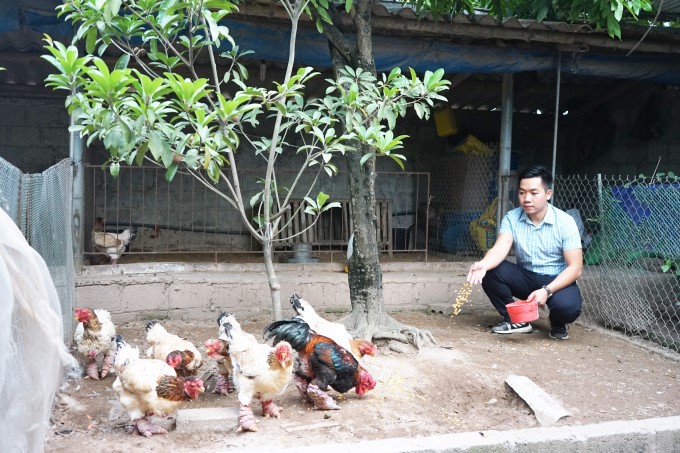
Dong Tao chicken has long been considered a rare and precious purebred chicken breed in Vietnam. Photo: Hong Tham.
In order to preserve and develop the Dong Tao chicken, the first task is to rehabilitate genetic resources and select purebreds to expand the population. Only when the population grows can it be proposed for exploitation and development?
Exploitation and development take two forms: pure form and hybrid form (hybrid with other genetic resources to develop into goods). There are breeds that, if kept pure, can't be produced for goods. So, they must be crossed but still kept in a certain pure form.
For example, Ri chicken is an indigenous chicken of Vietnam and is a type of chicken in that it has both a pure form and a hybrid form. Up until now, no type of chicken has "overthrown" it. The meat quality is delicious, and the yield of the selection process has reached 130–150 eggs/hen/year.
Although they are traditional livestock, in order to preserve, store, and develop them, we can no longer use traditional methods but must apply science and technology. According to you, is this an important condition for promoting the effectiveness of native livestock breeds in the future, sir?
Exactly so. Science and technology play a very important role in the preservation, storage, and development of indigenous livestock breeds.
NIAS has successfully replicated the pot-bellied pig from pig ear histocytes, which is admired by many countries. A country that is not interested in scientific research in general and basic scientific research, in particular, will lag behind.
Protecting ear histocytes, sperm, and embryos can only be done in cattle. This has not yet been able to be done in poultry. The conservation burden on poultry has been somewhat reduced, but poultry and waterfowl still have to be conserved by live animals.
Poultry has only just made a breakthrough in artificial insemination. Therefore, in the future, it will be very important to do more research on poultry to know how to distinguish sex from embryos and eggs.
Dear sir, how do you evaluate the role of localities and businesses in the work of preserving and storing livestock genetic resources?
The State and locality play a very important role in the work of preserving and storing livestock genetic resources. The State initially supports this by helping to investigate and collect potential rare and precious genetic resources. As for the locality with precious and rare indigenous genetic resources, the preservation and storage of genetic resources is an economic benefit for the people there.
In recent times, NIAS has also faced many difficulties, especially the issue of funding for storing the original breed. It is hoped that the obstacles will soon be resolved so that the Institute can continue to focus on promoting activities of restoration, storage of original genetic resources, and breeding and development of indigenous livestock breeds.
And in order to develop indigenous livestock into goods with high economic value, the leading role of businesses cannot be missed.
After the initial support of the State and the support of the locality owning indigenous livestock breeds, the entire commercial and sales stages should be handed over to businesses. The call for businesses to participate and take responsibility will bring sustainable success.
Quang Ninh is a successful model of the linkage between the State, localities, scientists, and businesses in the development of indigenous livestock breeds. In addition to Mong Cai pig, Tien Yen chicken, and Dam Ha chicken, NIAS is also supporting Quang Ninh to rehabilitate a number of other livestock breeds in the coming time.
Thank you, sir!
Translated by Huyen Vu Thu
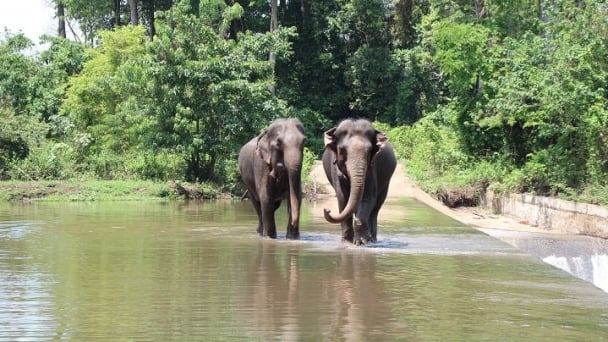
(VAN) 14 out of 35 domesticated elephants in Dak Lak province have had their living conditions improved, with 11 of them currently participating in the non-riding elephant tourism model.

(VAN) Muong Nhe Nature Reserve hopes that being upgraded to a national park will lay the foundation for forest protection efforts to be carried out in a systematic, modern, and sustainable manner.
/2025/05/16/3923-2-171845_52.jpg)
(VAN) Lower costs, higher yields, and improved soil quality are outstanding benefits that soybeans bring when integrated into the crop rotation system.
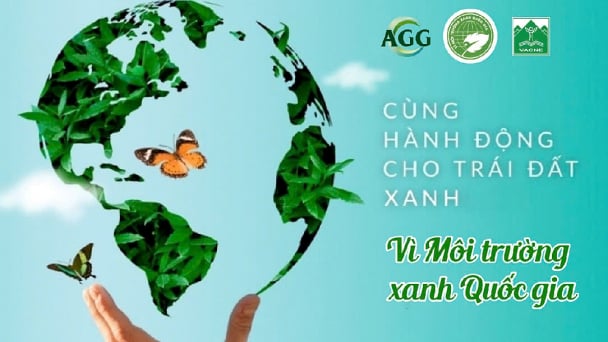
(VAN) The 'For a Green National Environment' programme aims to promote a green lifestyle, support businesses in implementing ESG practices, and turn Net Zero commitments into concrete actions.
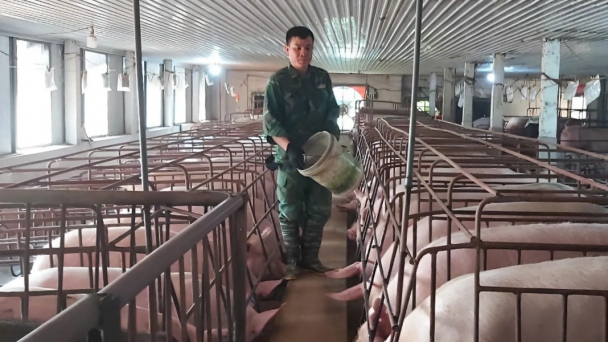
(VAN) Cold-barn systems efficiently manage environmental and temperature conditions, which aids in the prevention of respiratory diseases in pigs and protects them from the vectors that transmit African swine fevers.
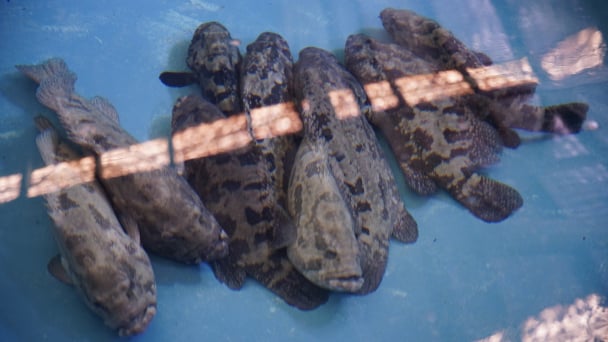
(VAN) To tackle challenges, the project 'Addressing key technical bottlenecks in the grouper supply chain in Vietnam' has been underway since 2024.
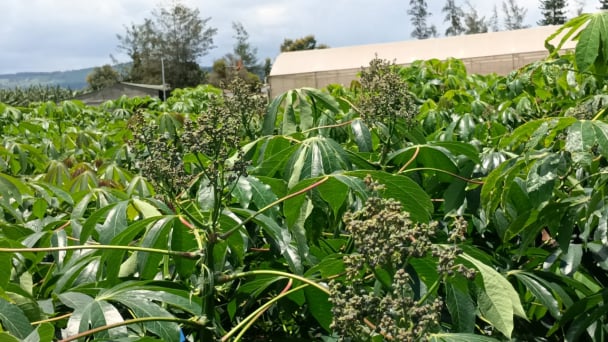
(VAN) The project 'Disease-Resilient and Sustainable Cassava Production Systems in the Mekong Region', funded by the Australian Center for International Agricultural Research (ACIAR), is being implemented from 2024 to 2028.